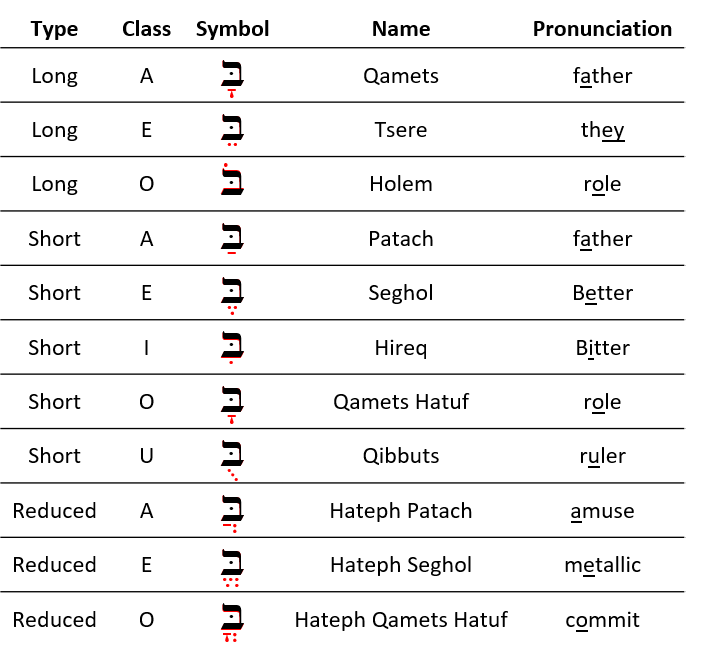2.2 Nikkudot Vowels: table
The table below lists the vowels that are Nikkudot only (i.e. not vowel letters). This table MUST be memorized, including type and class as well as the name and symbol.
- The Anki exercises will help us to commit this table to memory, so you don’t necessarily need to drop everything and memorize the table below!
- Review the table and get familiar with it; then review the discussion points on the next slide
- The letter בּ is provided as a placeholder
- Say the vowel after saying the associated consonant29.
- So, the first vowel example is “baw” not “awb.”30

Figure 2.3: Nikkudot Vowels
We will learn that Hebrew loves to break the rules. In the next lesson, we will learn about an exception to the “vowel comes after” rule, called the furtive patach.↩︎
See discussion in Lesson 1 on the differences between academic pronunication and that which we might hear from a native speaker. “Basics of Biblical Hebrew” labels the first vowel “Qamets” and pronounced either
qa-MAYTZorQA-maytz. Others, including Dr. Beckman, spell the vowel as “Qamats” and pronouncedqa-MAHTZ(or sometimes orQA-mahtz, which sounds like the English wordcomets). The short A, Patach has similar variation (some say “PATH-ac”, others, “Pa-TOCK”). For whatever reason, the pronunciation of the names of the vowels is not standardized, nor is this a point to be overly concerned about. For simplicity, students may choose to use Izzy’s pronunciation in Hebrew Quest. See Wikipedia articles for these vowels for additional historical background.↩︎